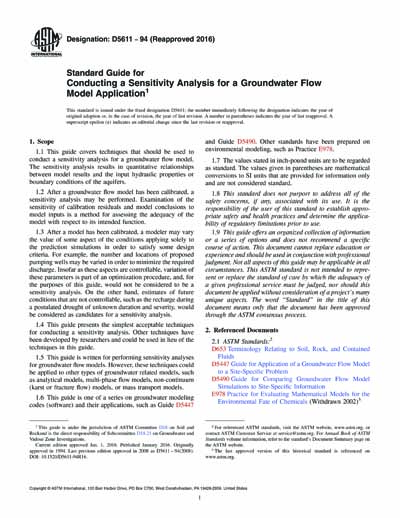Most recent
ASTM D5611-94(2016)
Standard Guide for Conducting a Sensitivity Analysis for a Groundwater Flow Model Application
1.1 This guide covers techniques that should be used to conduct a sensitivity analysis for a groundwater flow model. The sensitivity analysis results in quantitative relationships between model results and the input hydraulic properties or boundary conditions of the aquifers.
1.2 After a groundwater flow model has been calibrated, a sensitivity analysis may be performed. Examination of the sensitivity of calibration residuals and model conclusions to model inputs is a method for assessing the adequacy of the model with respect to its intended function.
1.3 After a model has been calibrated, a modeler may vary the value of some aspect of the conditions applying solely to the prediction simulations in order to satisfy some design criteria. For example, the number and locations of proposed pumping wells may be varied in order to minimize the required discharge. Insofar as these aspects are controllable, variation of these parameters is part of an optimization procedure, and, for the purposes of this guide, would not be considered to be a sensitivity analysis. On the other hand, estimates of future conditions that are not controllable, such as the recharge during a postulated drought of unknown duration and severity, would be considered as candidates for a sensitivity analysis.
1.4 This guide presents the simplest acceptable techniques for conducting a sensitivity analysis. Other techniques have been developed by researchers and could be used in lieu of the techniques in this guide.
1.5 This guide is written for performing sensitivity analyses for groundwater flow models. However, these techniques could be applied to other types of groundwater related models, such as analytical models, multi-phase flow models, non-continuum (karst or fracture flow) models, or mass transport models.
ASTM International [astm]

